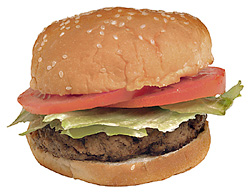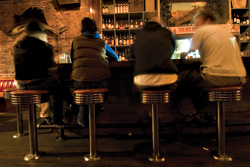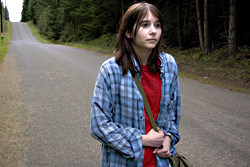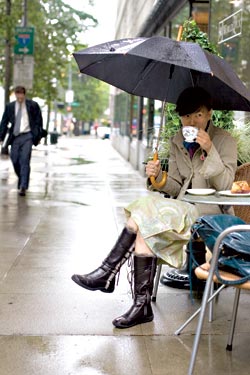![]() The Scavenger’s Guide to Haute Cuisine By Steven Rinella (Miramax Books, $23.95)
The Scavenger’s Guide to Haute Cuisine By Steven Rinella (Miramax Books, $23.95)
Author Steven Rinella, a Michigan native, grew up hunting and fishing, and he feels that really knowing how game gets to his table gives him license to eat it. In this culinary adventure account, when he and a friend set out to kill frogs—more on why later—he says: “If I ever decide that I can’t pull the trigger or release the arrow or throw the frog gig, I’ll be forced to ask myself the question: Are you willing to become a vegetarian?” He’s not.
Why the frog slaughter? It’s part of Rinella’s year-long quest to gather ingredients needed to make recipes from Auguste Escoffier’s Le Guide Culinaire, a hoity-toity haute cuisine cookbook from 1903. Escoffier, the Thomas Keller of his day, once directed the kitchen of London’s Savoy Hotel. Not that Rinella knew this until a friend loaned him the book. A self-described 21st-century hunter-gatherer, Rinella writes, “I was jealous that he got to live at such a cool time in history when it was fashionable and esteemed to eat all this bizarre stuff.” Hence his plan to cook an elaborate Escoffier feast for friends, after hunting-gathering the hard-to-find building blocks himself.
If this sounds like a testosterone-infused version of Julie Powell’s Julie & Julia, in which the author attempts all the recipes in Julia Child’s Mastering the Art of French Cooking, it’s no coincidence; this type of personal culinary quest writing has been on the rise, like reality TV stunts for foodies. Thus, we follow Rinella around the United States in search of elk organs, antelope kidneys and bladders, carp semen, crayfish, bear fat, pig’s tongue, songbirds, caul fat, pigeon nestlings, eel, and more. Most of the spoils are used in the over-the-top, 45 course, three-day meal at the end of the book.
What makes Scavenger’s Guide noteworthy today, given all that Michael Pollan, Eric Schlosser, and others have written about fresh-caught, self-harvested food, is that it forces a visceral re-examination of what we eat. How deeply do we appreciate the boneless slabs of meat at the grocery store? Reading the book, one feels guilty for being a privileged brat too out of touch with nature to ax a young pigeon for tonight’s squab dinner.
Luckily, Rinella, who comes across as both a cool slacker and a capable journalist (he’s written for Outside and The New Yorker), is never preachy. His adventure is inspiring and his friends are colorful. Whether you’ll want to eat from his menu, or Escoffier’s, is a different matter. MOLLY LORI E







